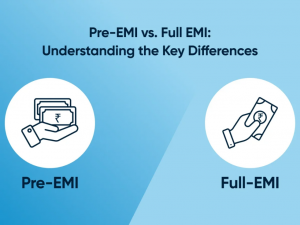The Maharashtra government is poised to increase Ready Reckoner (RR) rates by 10% starting April 1, 2025. This move, driven by recommendations from district authorities and stakeholder consultations, is currently under review. If approved, it will mark the first revision in three years, with significant implications for homebuyers, developers, and the real estate market.
Understanding Ready Reckoner (RR) Rates and Their Importance
RR rates are the government’s benchmark for determining property values for stamp duty and registration charges. While these rates often differ from actual market prices, they play a crucial role in real estate transactions. Any revision directly affects:
- Stamp duty calculations – Higher RR rates mean increased costs for buyers.
- Property tax assessments – Government valuations impact tax calculations.
- Transaction transparency – Standardized rates help regulate property pricing.
The last revision occurred in 2022, and given market fluctuations, the government now believes an update is necessary to align valuations with current trends.
Impact on Homebuyers and Developers
A 10% hike in RR rates could have a domino effect on the real estate sector, leading to:
- Increased Property Prices – Developers often adjust their base rates in response to government valuations, making homeownership more expensive.
- Higher Stamp Duty Payments – Buyers will need to pay more in government levies, increasing the overall cost of purchasing property.
- Potential Slowdown in Sales – If affordability declines, property transactions may witness a temporary slump.
- Market Sentiment Concerns – Investor confidence could take a hit, particularly among first-time buyers and middle-income groups.
Industry Reaction and Government’s Revenue Strategy
Real estate developers and industry bodies, including CREDAI Maharashtra, have voiced concerns, urging the government to reconsider the move. The sector is still stabilizing post-pandemic, and a sudden hike in RR rates could dampen demand.
On the flip side, the Maharashtra government is expected to go ahead with the revision, citing revenue generation as a primary objective. Stamp duty and registration fees are among the state’s largest income sources, with projected collections exceeding ₹60,000 crore. The additional revenue is likely to be allocated towards various infrastructure and welfare initiatives.
Why Now? The Rationale Behind the Hike
The revenue department had proposed the hike earlier this year but delayed the implementation due to elections. Officials argue that:
- The last increase was three years ago, making an update overdue.
- Property prices in several regions have surged, and RR rates must reflect these changes.
- The government needs additional revenue for ongoing development projects.
Future of RR Rate Assessments: GIS-Based Mapping
While the current assessment system relies on market intelligence, registered documents, and local surveys, Maharashtra is working on introducing GIS-based mapping for more precise RR valuations. This technology will allow for a more scientific approach to determining property values, but it remains incomplete for urban areas and will not be applicable for the upcoming revision.
What’s Next? Stakeholders Await Final Decision
The government has yet to officially confirm the hike, but all indicators point towards its implementation from April 1, 2025. In the meantime, industry experts predict a brief dip in registrations as buyers rush to close deals before the revision takes effect. However, market stability is expected in the long run as developers and investors adapt to the new rates.
For prospective homebuyers, now might be the best time to finalize purchases before costs increase. Meanwhile, developers and industry bodies will continue lobbying for a more balanced approach to ensure the real estate sector remains robust and accessible.
Conclusion: What’s Next for Maharashtra’s Real Estate Market?
With the Maharashtra government likely to implement a 10% increase in Ready Reckoner (RR) rates from April 1, 2025, property buyers, sellers, and developers must prepare for the impact. While this move will boost government revenues, it may also push up property prices, affecting affordability and transaction volumes in the short term.
As stakeholders await the final decision, the real estate sector must navigate these changes strategically. Whether you’re a homebuyer looking to invest before the hike or a developer assessing pricing strategies, staying informed is crucial.
Additionally, Budget 2025 is expected to bring key policy shifts that will influence real estate dynamics across India.
To understand how the upcoming budget could impact housing prices, tax benefits, and government incentives, check out our in-depth blog: Impact of Budget 2025 on Indian Real Estate
FAQs
The Maharashtra government is poised to increase Ready Reckoner (RR) rates by 10% starting April 1, 2025. This move, driven by recommendations from district authorities and stakeholder consultations, is currently under review. If approved, it will mark the first revision in three years, with significant implications for homebuyers, developers, and the real estate market.
Understanding Ready Reckoner (RR) Rates and Their Importance
RR rates are the government’s benchmark for determining property values for stamp duty and registration charges. While these rates often differ from actual market prices, they play a crucial role in real estate transactions. Any revision directly affects:
- Stamp duty calculations – Higher RR rates mean increased costs for buyers.
- Property tax assessments – Government valuations impact tax calculations.
- Transaction transparency – Standardized rates help regulate property pricing.
The last revision occurred in 2022, and given market fluctuations, the government now believes an update is necessary to align valuations with current trends.
Impact on Homebuyers and Developers
A 10% hike in RR rates could have a domino effect on the real estate sector, leading to:
- Increased Property Prices – Developers often adjust their base rates in response to government valuations, making homeownership more expensive.
- Higher Stamp Duty Payments – Buyers will need to pay more in government levies, increasing the overall cost of purchasing property.
- Potential Slowdown in Sales – If affordability declines, property transactions may witness a temporary slump.
- Market Sentiment Concerns – Investor confidence could take a hit, particularly among first-time buyers and middle-income groups.
Industry Reaction and Government’s Revenue Strategy
Real estate developers and industry bodies, including CREDAI Maharashtra, have voiced concerns, urging the government to reconsider the move. The sector is still stabilizing post-pandemic, and a sudden hike in RR rates could dampen demand.
On the flip side, the Maharashtra government is expected to go ahead with the revision, citing revenue generation as a primary objective. Stamp duty and registration fees are among the state’s largest income sources, with projected collections exceeding ₹60,000 crore. The additional revenue is likely to be allocated towards various infrastructure and welfare initiatives.
Why Now? The Rationale Behind the Hike
The revenue department had proposed the hike earlier this year but delayed the implementation due to elections. Officials argue that:
- The last increase was three years ago, making an update overdue.
- Property prices in several regions have surged, and RR rates must reflect these changes.
- The government needs additional revenue for ongoing development projects.
Future of RR Rate Assessments: GIS-Based Mapping
While the current assessment system relies on market intelligence, registered documents, and local surveys, Maharashtra is working on introducing GIS-based mapping for more precise RR valuations. This technology will allow for a more scientific approach to determining property values, but it remains incomplete for urban areas and will not be applicable for the upcoming revision.
What’s Next? Stakeholders Await Final Decision
The government has yet to officially confirm the hike, but all indicators point towards its implementation from April 1, 2025. In the meantime, industry experts predict a brief dip in registrations as buyers rush to close deals before the revision takes effect. However, market stability is expected in the long run as developers and investors adapt to the new rates.
For prospective homebuyers, now might be the best time to finalize purchases before costs increase. Meanwhile, developers and industry bodies will continue lobbying for a more balanced approach to ensure the real estate sector remains robust and accessible.
Conclusion: What’s Next for Maharashtra’s Real Estate Market?
With the Maharashtra government likely to implement a 10% increase in Ready Reckoner (RR) rates from April 1, 2025, property buyers, sellers, and developers must prepare for the impact. While this move will boost government revenues, it may also push up property prices, affecting affordability and transaction volumes in the short term.
As stakeholders await the final decision, the real estate sector must navigate these changes strategically. Whether you’re a homebuyer looking to invest before the hike or a developer assessing pricing strategies, staying informed is crucial.
Additionally, Budget 2025 is expected to bring key policy shifts that will influence real estate dynamics across India.
To understand how the upcoming budget could impact housing prices, tax benefits, and government incentives, check out our in-depth blog: Impact of Budget 2025 on Indian Real Estate
FAQs






